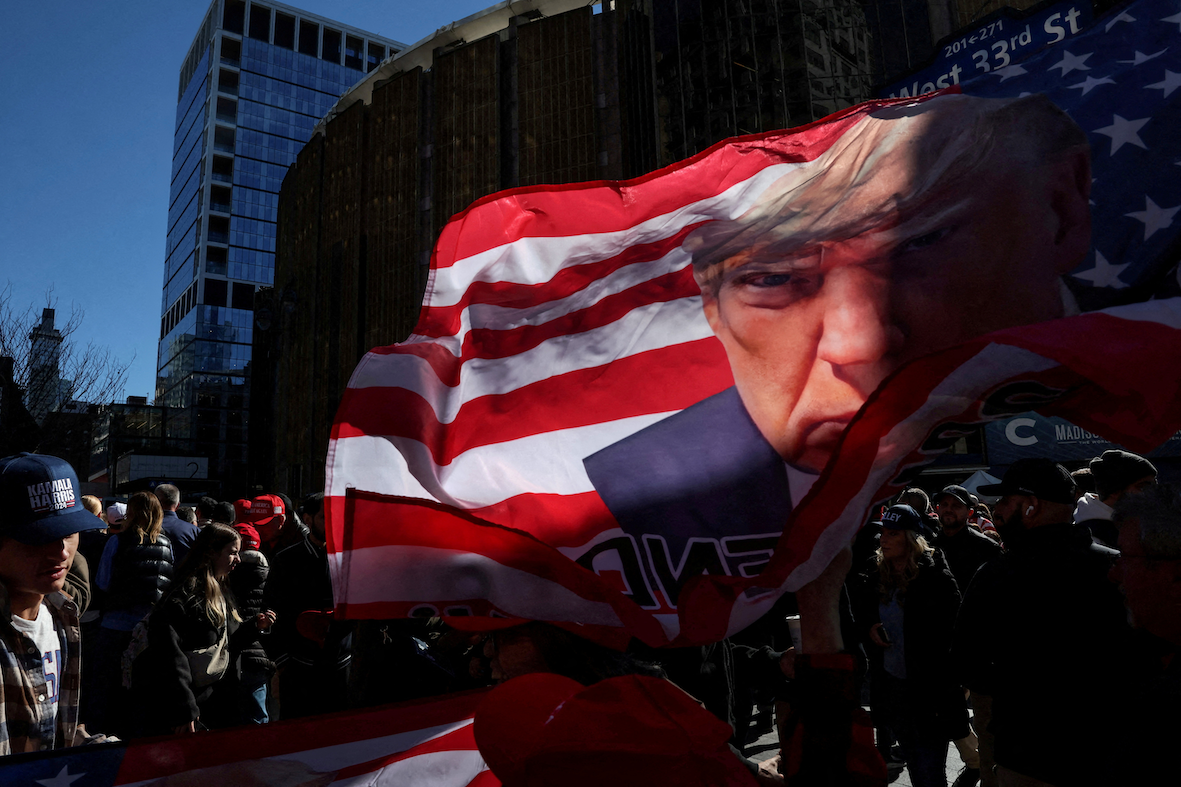Donald Trump’s return to the presidency of the United States has been a bitter disappointment to many; however, the scale of his victory reflects long-simmering frustration among America’s middle class. In fact, Trump’s victory is itself a signal of a tectonic shift in the global order. Even as the Biden administration has sought desperately to reconstitute the “rules-based order,” American power has been disintegrating for some time. More to the point, Trump’s re-election hints at a new global order in which Pax Americana has come to an end.
While the United States continues to wield significant military, economic and political influence, it no longer enjoys — nor seeks to maintain — global hegemony. America is now engaged in a domestic power struggle between the establishment — the so-called deep state — and a more transactional vision of American leadership. Trump’s rise to power has exposed deep-seated domestic antipathy toward American empire building. This seismic shift is a response to what many now refer to as the multipolar world order. In fact, a better term for this new era is “multinodality.”
Where multipolarity defines the global order in terms of great powers and weak powers, multinodality understands power in terms of geopolitical influence. Larger economies still have more power than smaller economies, but power depends on a nation’s position within a web of relationships. In a multinodal system, power depends on dominating the world’s trade arteries, energy markets, sea lanes, transportation corridors and technology clusters. Rather than depending on military coercion to dominate the field of competition between a few major “poles,” the global system is now being reconfigured around a distributed network of economic and financial nodes.
Geopolitical Strategy Within a Multinodal System
As the largest nodes in the network, the United States and China are leveraging their immense economic capacity to dominate frontier technologies, particularly artificial intelligence (AI). Both countries now seek to reconfigure the multinodal world order around their networks of influence. For China, the focus has been its vast supply-chain empire. Leveraging its dominion over industrial production, China has expanded its geopolitical influence through a complex web of institutions and trade agreements. These include the Belt and Road Initiative, the Asian Infrastructure Investment Bank, the New Development Bank, the Global Development Initiative and the Regional Comprehensive Economic Partnership.
For the United States, the strategic goal has been to contain China. In a concerted effort to slow China’s rise, the United States and its allies have focused on military alliances over trade alliances. But rather than containing China, US policies have instead simply isolated the United States and reduced its commercial influence. As Vice President-elect J. D. Vance recently explained, China’s rise is increasingly viewed around the world as a harbinger of a new economic order in which industrial capacity outweighs military bluster.
Trump’s initial rise to power in 2016 was rooted in a US-led tariff war designed to curb China’s growing influence. Building on those policies, the Biden administration sought to frame competition with China as a civilizational struggle, as a new Cold War between “democracies” and “autocracies.” For many nations outside the West, this rhetoric has largely fallen flat. Framing contemporary geopolitics in terms of a security competition between the United States and its adversaries is misguided. Rather than simply choosing sides between the West and the rest, countries around the world are choosing to be “multi-aligned.”
US strategy has been largely ineffective outside the West because geopolitical influence within a multinodal system depends on connection rather than coercion. Hard power still matters, of course, but as the wars in Ukraine and the Middle East demonstrate, coercion is more likely to lead to stalemate or crisis than to dominance. Rather than victory, war dissolves the web of financial, commercial and political relationships that hold nations together.
Beyond Hard Power
No nation is an island today. In a network era, power expands and contracts with the network itself. Unlike the power struggles of the twentieth century, power increasingly depends on steering the “commanding heights” of the global economy. In a multinodal system, geopolitical influence is not simply scattered among a few great nations. Rather, influence depends on being connected across as many nodes as possible.
American efforts to slow China’s rise have been largely unsuccessful. In fact, tariffs have had surprisingly little effect on China’s strategic direction. America’s trade deficit with China has increased from $420 billion in 2017 to $822 billion in 2023. China is projected to account for almost half of all global manufacturing by the end of this decade. While the country still lags the United States in production of the most advanced semiconductors, Beijing has achieved the vast majority of its industry planning targets. Indeed, the Middle Kingdom continues to benefit enormously from the security environment maintained by the US military, even as US multinationals remain dependent on China’s vast consumer market.
With America’s federal debt now projected to exceed the levels reached during the Second World War, the US-led order has begun unravelling. Indeed, America’s shrinking share of global production and trade cannot be reversed through a new Cold War. In a multinodal era, global trade means that ecological, industrial and even political systems can no longer be viewed as closed. Rather, they are features of a single interwoven web of commerce, communication, consumption and contagion. It is estimated that the US government has spent more than $8 trillion on war over the past two decades. Rather than aiming for attrition through war, America should focus on addition through trade.



